According to the Center for Biological Diversity, it is estimated that the bumblebee has declined in numbers by 89% over the past 20 years due to habitat loss, disease and pesticides. As one of nature’s primary pollinators, bees are essential for the production of the food we eat. But they are not the only ones threatened. The number of officially endangered species grows every day. The International Union for the Conservation of Nature estimates that the total is over 40,000.
However, the total number of species that are threatened by human activities is closer to 1 million according to the United Nations Sustainable Development Goal (SDG) Life on Land. And this includes species on land and water. In the UN SDG Life Below Water, they state;
“…there is a continuous deterioration of coastal waters owing to pollution, and ocean acidification is having an adversarial effect on the functioning of ecosystems and biodiversity.”
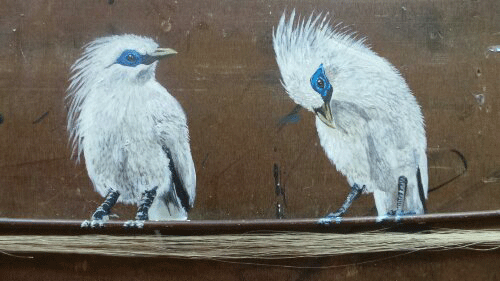
British artist Louis Masai is determined to bring awareness to the plight of these endangered species. After obtaining an art degree from Falmouth University in Cornwall England in 2010, Louis moved to London. Though he thrives in this very urban environment, Louis has always loved wild animals and he immediately made them the focus of his work.
But from the very beginning, he would combine an unexpected element with his natural subjects. For example, in 2013, he created ‘Last of My Kind’, an outdoor exhibit that connects endangered birds and “extinct” musicians, challenging us to question why we pay more attention to people we have never met than to disappearing species.
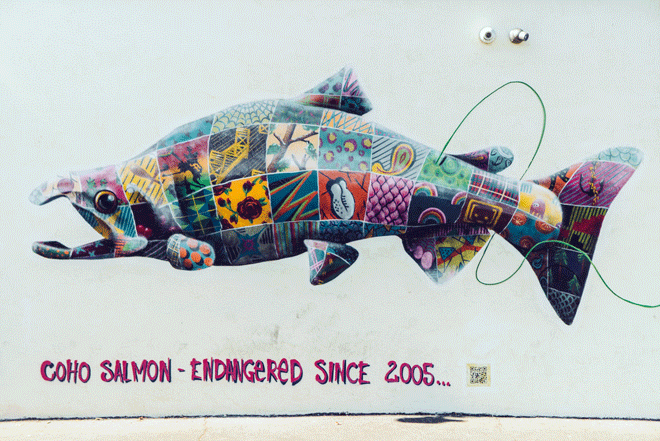
In 2016, Louis teamed up with Human Nature, an art production company that promotes environmental artists, to create The Art of Beeing, a mural painting tour of the USA. Over 20 murals were created in 12 cities across nine states. Collaborating with local conservationists and artists, Louis chose a particular threatened species from that state to paint. The locations were varied but always in an area where anyone could see them.
Each animal was painted to look like a stuffed toy to convey the message that if we don’t change our ways, toys are all that will be left. The joyful patterns on each painting seem to contradict the overall message but he wanted to express the idea of a hand- made patch quilt. Just as quilts were handed down through generations, so will our environmental problems. In each painting, there is a bee stitching the toy together. This was done to symbolize that the bee is the warrior in this process; an essential player keeping the ecosystem together.
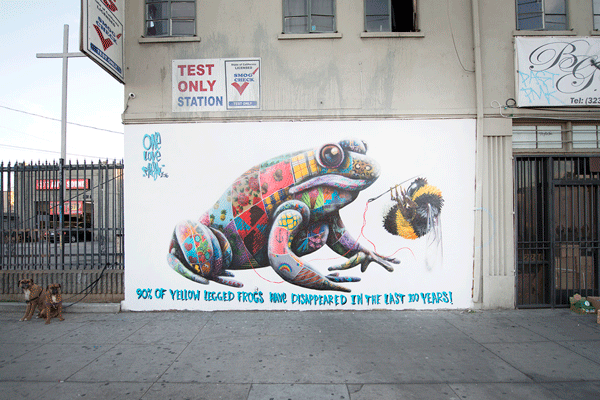
Louis wants people to be more bee-like because every bee in the colony has a responsibility for the whole. They know they have to work together to survive.
Louis followed up on the success of the tour by producing another community event called Endangered 13 whereby 13 artists we asked to paint endangered species on the arches of a building in Tower Hamlets Cemetery Park in East London. The open community event took place over the course of a day and included food, drink and live music. In addition to the event, the promotional website gives background information about the species each artist depicted and information regarding what viewers can do to help.
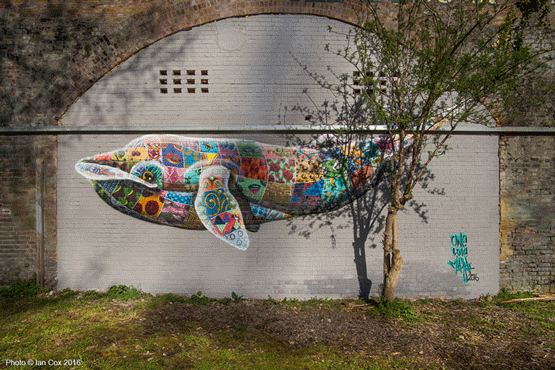
Connecting the message to the viewer is an essential part of Louis’ work. By including information about the species on the mural Louis creates, he is educating the viewer about their plight, not just showing a pretty picture. Making the message understandable and accessible is essential for things to change.
Louis has already witnessed the response through social media. “[P]eople take pictures of my work and tag #savetherhino or #savethebee and it gets people thinking,” says Louis. This is how street art can reach a much wider audience of influencers and bloggers.
Art has the power to educate and make us feel but it can sometimes be very passive. Pictures that hang in a gallery are to be looked at and considered intellectually. But the message of Louis’ The Art of Beeing is one of action and community collaboration. With this project and others, he has painted over 180 endangered species on urban walls all around the world, spreading the message far and wide.
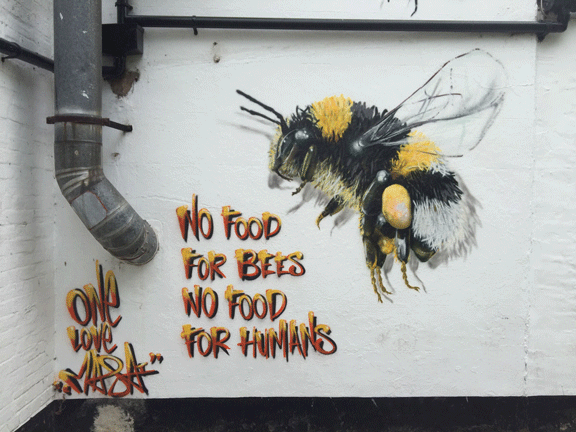
As the organization Human Nature says in their manifesto;
“Creativity is not a neutral, value-free process and the choices we make in the work we produce have an impact. We choose to take responsibility to design and promote a sustainable future.”
Recently, Louis has expanded his creative outlets and, with his friend DJ and music producer Hylu, has created a podcast called 'All Fruits Ripe'. Guests include artists, muscians, scientists, environmentalists and topics centre around their love for nature and concern for the environment.
As Louis says in the promotional video for The Art of Beeing;
“We can learn from the rest of the animal kingdom but we have to listen to it first. If there was ever a time that it is shouting at us the loudest, that time is now.”
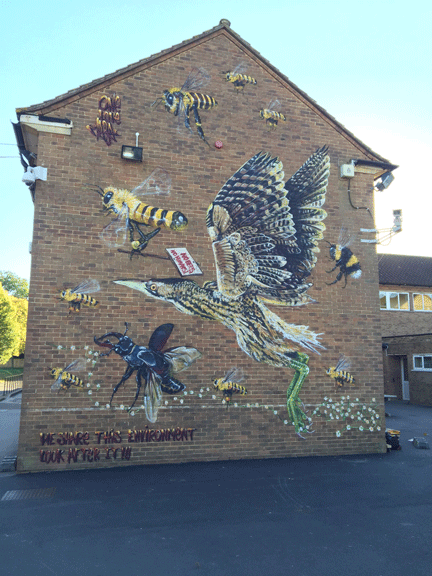
To see more of Louis’s work and hear his podcast, visit his website.
